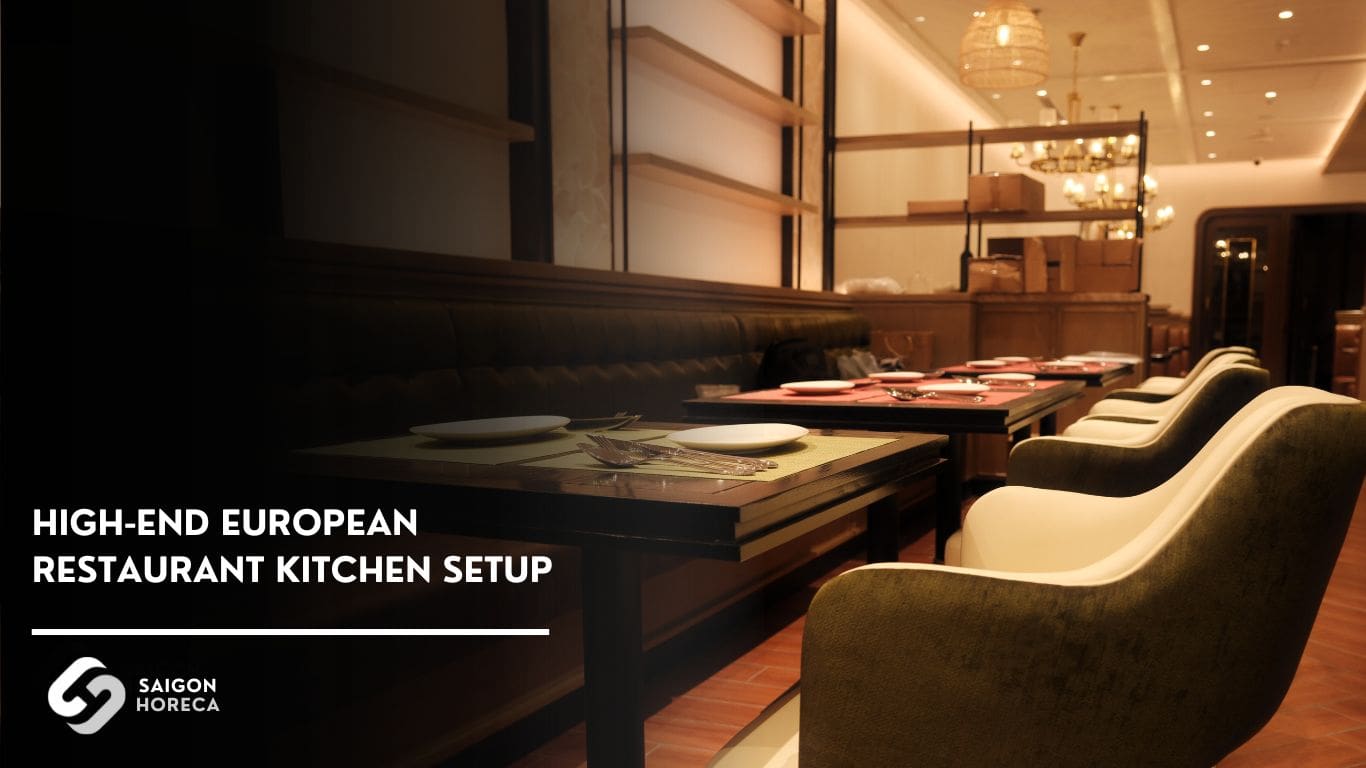
- Industrial Kitchen Equipment
High-End European Restaurant Kitchen Setup: Smart Design, Smooth Operation, HACCP-Compliant
- May 30, 2025
In high-end European restaurants – where every detail matters, from the flavor of the dish to the sharpness of the kitchen layout – “kitchen design” is no longer just a technical matter. It’s an operational strategy, an aesthetic benchmark, and above all, a silent promise of quality in every plate served.
So ask yourself:
Are you underestimating the role of your kitchen space in your restaurant’s success?
Are you investing heavily in your facade, interior, and menu… but unintentionally overlooking the “operational heart” that quietly defines your guest’s entire dining experience?
In this article, Saigon Horeca will walk you through the full picture of designing and building a premium European-style restaurant kitchen – with a focus on aesthetics, streamlined workflows, and HACCP compliance.
Not only will your kitchen look sharp and work smart, it will also bring long-term value to your culinary business strategy.
In this article
Why Is European Restaurant Kitchen Design More Demanding?
Designing a European restaurant kitchen is often considered a “tough challenge” – even for experienced design and construction teams. That’s because in a high-end European restaurant, the kitchen isn’t just a place for cooking. It’s the backstage where culinary art is crafted with near-perfect precision.
Every movement – from chopping, cooking, plating to serving – must follow a strict, streamlined workflow. There’s no room for clutter, no overlap in tasks.
Even the smallest design flaw can slow down the kitchen during peak hours, create chaos, and directly impact the quality of service.
1. European Cuisine: Every Dish Follows a Strict Process
European cuisine is known for its structured courses – from appetizers and soups to mains and desserts. Each dish requires specific temperatures, timing, and cooking techniques. That’s why the kitchen must be clearly divided into well-defined functional zones, such as:
- Receiving and rough prep area
- Fine prep and cold storage (Dry, Cold & Freezer zones
- Cooking stations (Hot kitchen, Cold kitchen, Grilling/Steaming area)
- Plating and serving line
Without a proper layout from the start, the kitchen can quickly become chaotic during peak hours. This often leads to inconsistent dish quality – something unacceptable for discerning diners.
Moreover, poor design can result in mismanaged staffing: overlapping roles, inefficient task flow, and uneven workload distribution. Some staff may be overwhelmed, while others are left idle.
The result? Slower service, reduced kitchen harmony, and ultimately, a negative impact on customer satisfaction and the restaurant’s reputation.
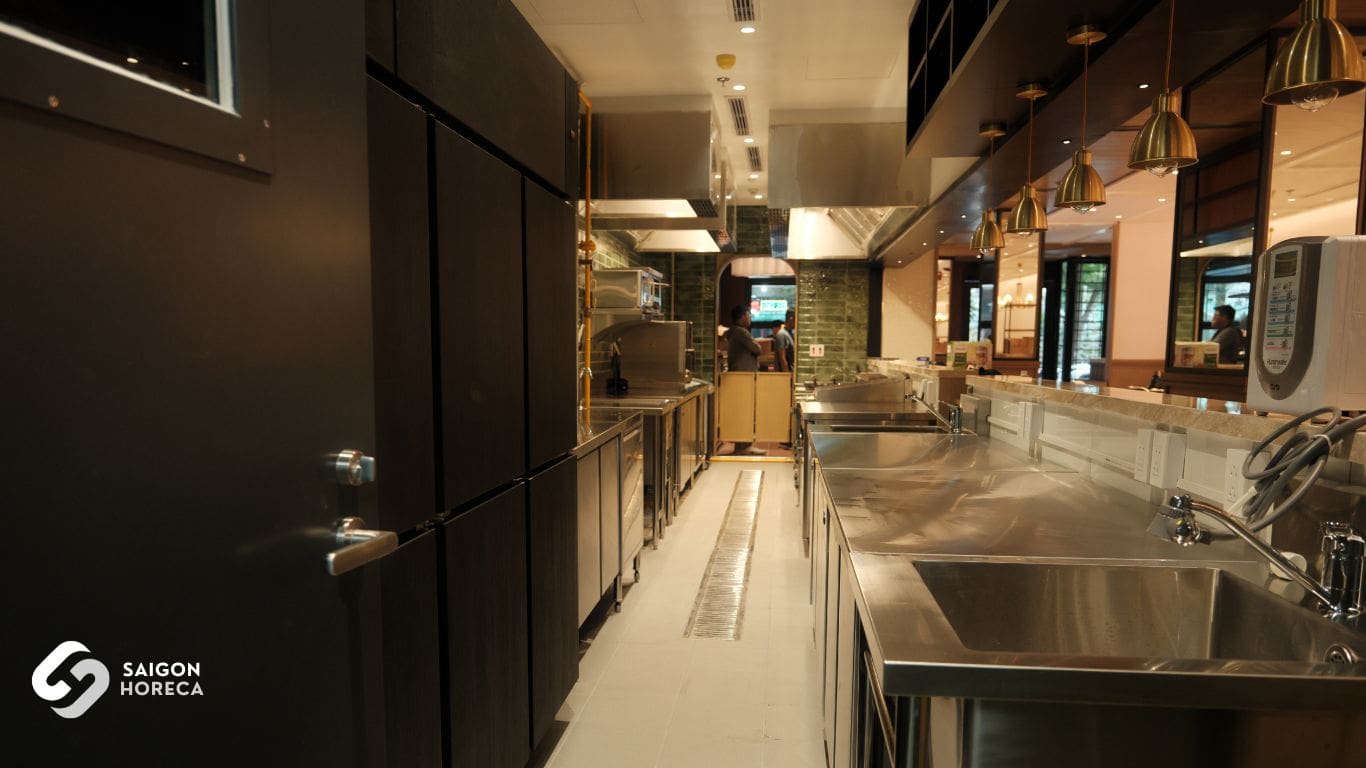
2. High Aesthetic Standards: Not Just Clean, but Beautiful and Modern
Many European restaurants today opt for semi-open kitchen designs – allowing diners to observe the cooking process. This means the kitchen must not only be impeccably clean, but also aesthetically pleasing, with synchronized equipment, proper lighting, and thoughtful layout.
The kitchen becomes part of the dining experience, no longer hidden behind stainless-steel doors. Every shelf, every misplaced appliance can influence how guests perceive the professionalism and quality of the restaurant.
3. Strict Hygiene Standards (HACCP Compliance)
For restaurants serving international guests or operating within 4–5-star hotel systems, HACCP food safety certification is practically a must.
This requires the kitchen design to strictly follow:
- One-way flow of raw materials and cooked food
- Avoidance of cross-contamination
- Easy-to-clean surfaces throughout
- Use of appropriate materials like 304 stainless steel, rounded corners, and minimal gaps
In this case, the kitchen is not only where great meals are made – it’s also a guarantee of health and safety, forming the foundation for long-term customer trust and brand reputation.
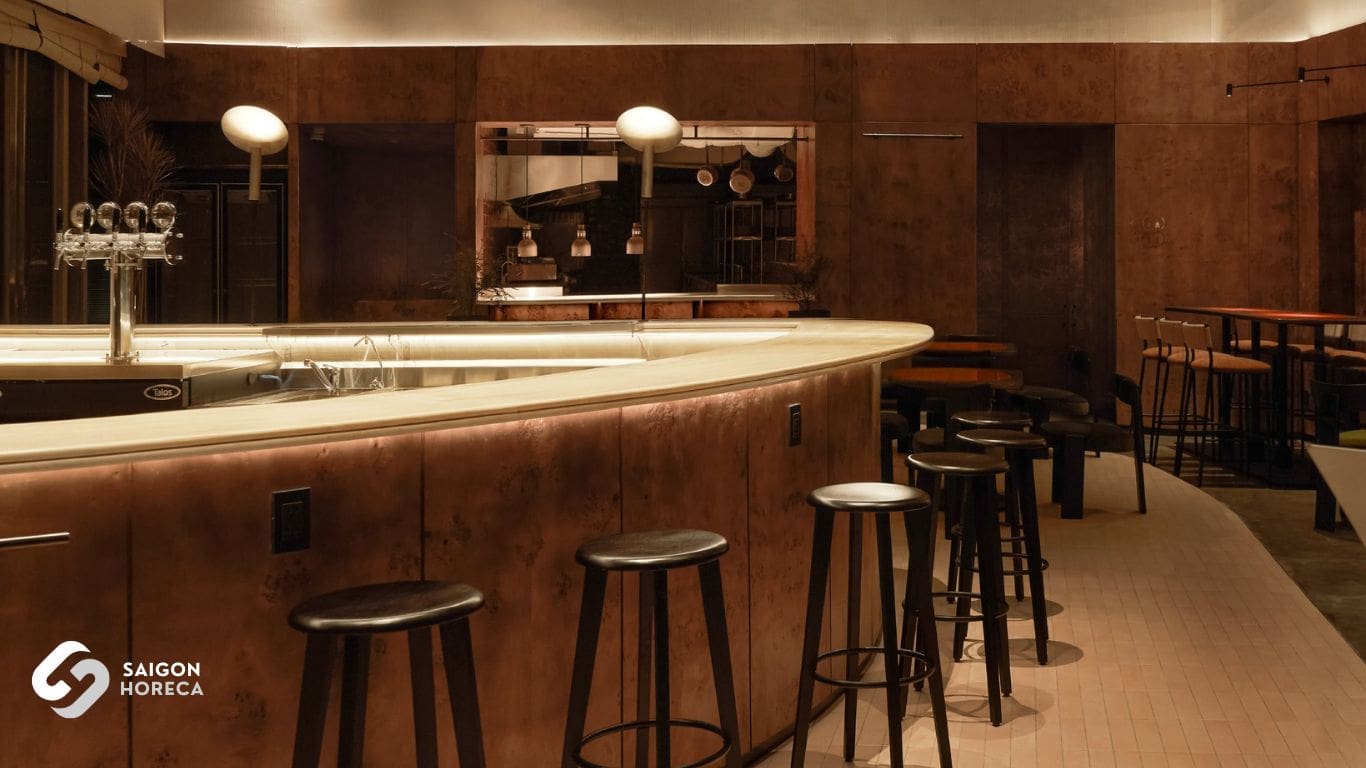
Key Operational Characteristics of High-End European Restaurant Kitchens
Unlike many traditional Asian kitchen models, European restaurant kitchens often follow a station-based layout – dividing the kitchen into specialized stations, each responsible for a specific task or dish type.
Each station plays a unique role:
- Grill Station: for grilling meat and seafood
- Sauté Station: for pan-frying and sautéing
- Sauce Station: for preparing sauces and base stocks
- Garde-Manger: for cold dishes and salads
- Pastry Station: for desserts and baked goods
This structure allows chefs to focus on one precise task, ensuring consistency and top-quality execution for every dish. However, to keep the flow seamless, the kitchen layout must be strategically planned so that stations are connected logically, without overlaps or bottlenecks.
European kitchens often handle a large volume of dishes in a short time, especially during peak service hours. This makes high-intensity operation a defining characteristic. A single bottleneck – even a small one – can disrupt the entire workflow.
Moreover, these kitchens usually operate with a multi-tiered chef hierarchy, including Executive Chef, Sous Chef, and multiple Chef de Partie roles for each station. Therefore, the kitchen layout must support smooth movement, minimize collisions, and avoid blocking key working areas – ensuring everyone can operate efficiently, even under pressure.
What Makes a European Restaurant Kitchen Truly Standard?
Behind every dish that impresses European diners is a kitchen built to exacting standards — a space that reflects not just culinary skill, but operational excellence. So, what does it take for a high-end European kitchen to meet the mark?
One-Way Workflow Design – Safety Starts with Structure
The first and most crucial requirement is a one-way workflow layout. This is a non-negotiable principle in any internationally standardized kitchen model. It helps prevent cross-contamination, enhances operational efficiency, and ensures food safety at every stage.
A compliant kitchen setup must have clearly separated zones:
- Receiving & Storage Area – for raw ingredients and goods
- Prepping Zone – completely separate from cooking stations
- Main Cooking Line – home to specialized cooking stations
- Plating & Pass Area – direct, fast access to the serving staff
- Washing & Waste Disposal Zone – placed at the end of the flow to avoid contamination
This clear segmentation ensures that each part of the kitchen operates independently yet harmoniously, minimizing workflow conflicts and physical collisions. The result is a smooth, uninterrupted kitchen operation – even during peak hours.
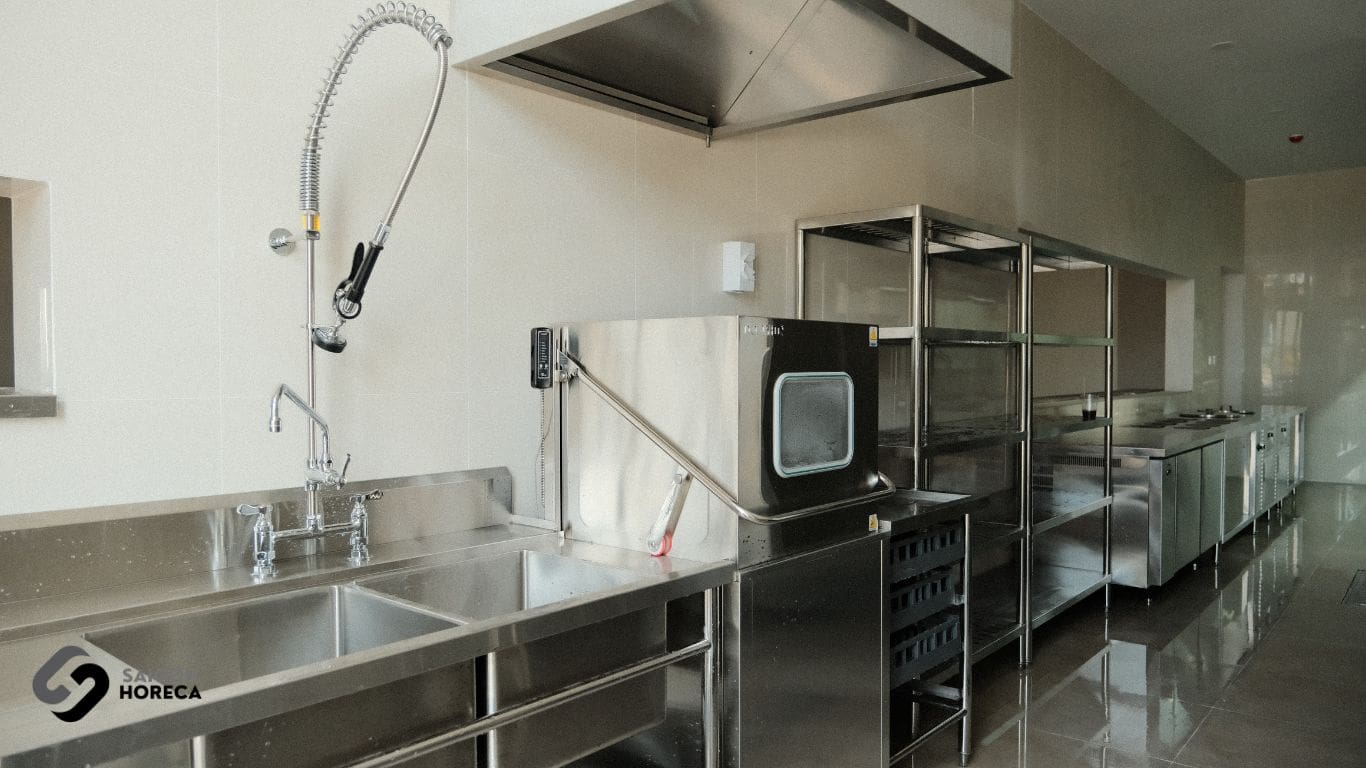
Synchronization of Modern Industrial Kitchen Equipment
A professional European kitchen requires equipment that meets strict standards of power capacity, durability, and performance. Depending on the restaurant model, commonly used equipment includes:
- Industrial induction cookers, grills, and multi-functional Combi Ovens
- Chillers, salad display fridges, baking ovens, and salamanders
- Ventilation and heat treatment systems, along with high-CRI lighting to help chefs monitor dish quality accurately
Having synchronized, well-matched equipment not only maximizes kitchen space but also improves the workflow efficiency of the entire culinary team.
Materials and Surfaces That Meet HACCP Standards
To ensure food safety, all equipment and kitchen surfaces must comply with HACCP hygiene standards. This is reflected in the choice of materials:
- 304 stainless steel – corrosion-resistant, durable, and easy to clean
- Smooth, rounded surfaces – to reduce dirt buildup and bacterial growth
- Non-slip flooring, proper drainage systems, and professional grease filters
Only when all three core elements are ensured – one-way kitchen design, modern equipment, and HACCP-compliant materials – can a European restaurant kitchen truly operate efficiently, safely, and sustainably.
HACCP-Compliant Kitchen Design Principles for European Restaurants
In high-end European restaurants—where food preparation is complex and involves a wide variety of ingredients—food safety is non-negotiable. That’s why kitchen design must be planned from the start based on HACCP standards.
HACCP (Hazard Analysis and Critical Control Points) is an internationally recognized food safety management system. It focuses on identifying hazards and controlling critical points throughout the entire process—from raw ingredient intake to finished dish delivery.
To build a HACCP-compliant kitchen, the design must follow several key principles:
- Clear Separation of Clean and Contaminated Zones: Raw and cooked food paths must not cross. Areas for prep, cooking, and plating should be arranged in a one-way workflow to prevent cross-contamination.
- Temperature Control and Heat Management: Cold storage areas, hot cooking zones, and food holding units should be clearly separated. Each area must be equipped with temperature monitoring systems to ensure consistent safety levels.
- Drainage and Ventilation Systems: Flooring must be sloped for proper drainage to avoid water accumulation. Ventilation and smoke extraction systems must have sufficient capacity to maintain air quality, reduce humidity, and prevent microbial buildup.
- Safe Contact Surfaces and Materials: All kitchen surfaces—worktops, shelves, sinks—should be made of 304 stainless steel, which is easy to clean, corrosion-resistant, and non-porous to bacteria.
By integrating HACCP principles into the design phase, restaurants not only ensure safe kitchen operations, but also lay the foundation for international certifications, scalable operations, and future franchising potential.
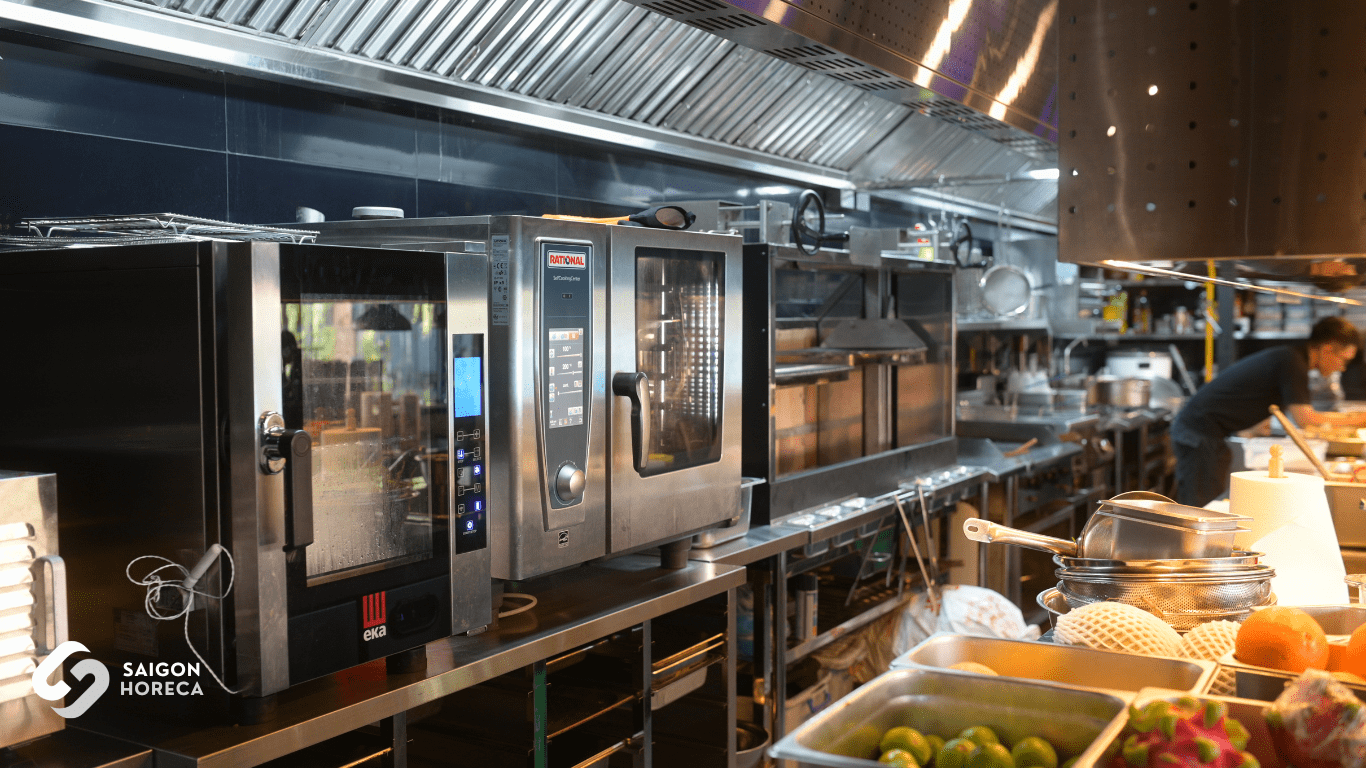
Optimizing Kitchen Workflow in European Restaurant Design
Efficient kitchen operations don’t come from a visually appealing layout alone. True efficiency begins with intentional planning – where kitchen design becomes a strategic tool to boost productivity and maintain quality control.
Designing Around the Menu and Service Capacity
Each European restaurant has its own unique menu and operational needs. Simply replicating another kitchen model often leads to workflow issues and wasted space.
To truly optimize performance, a high-end European kitchen design should begin with an in-depth analysis of:
- The menu: number of dishes, preparation methods, and storage requirements
- Expected guest volume: peak hours, daily traffic, special events
- Kitchen staffing: team size, hierarchy, and station-based collaboration
Only then can you determine the right number of stations, the necessary equipment, and a layout that is compact, streamlined, and adaptable.
Many modern European restaurants now choose open or semi-open kitchen layouts, turning the kitchen into both a visual highlight and a live culinary stage.
A well-designed semi-open kitchen can:
- Inspire creativity among kitchen staff
- Build transparency and trust with guests
- Maintain a clean, cohesive, and modern aesthetic at all times
However, this also demands highly disciplined workflow and exceptionally smart design to keep the space tidy and performance-ready during all service hours.
Embracing Kitchen Technology – Elevating Operational Control
To fully address productivity and consistency, more upscale restaurants are integrating kitchen management software and automated monitoring systems. These tools support:
- Real-time inventory tracking and stock alerts
- Prep and plating schedules aligned with service times
- Portion control and standardization of dish quality
- Performance analysis for each kitchen shift
When technology becomes a silent assistant, managing a European kitchen no longer feels like a logistical challenge – it becomes a competitive advantage.
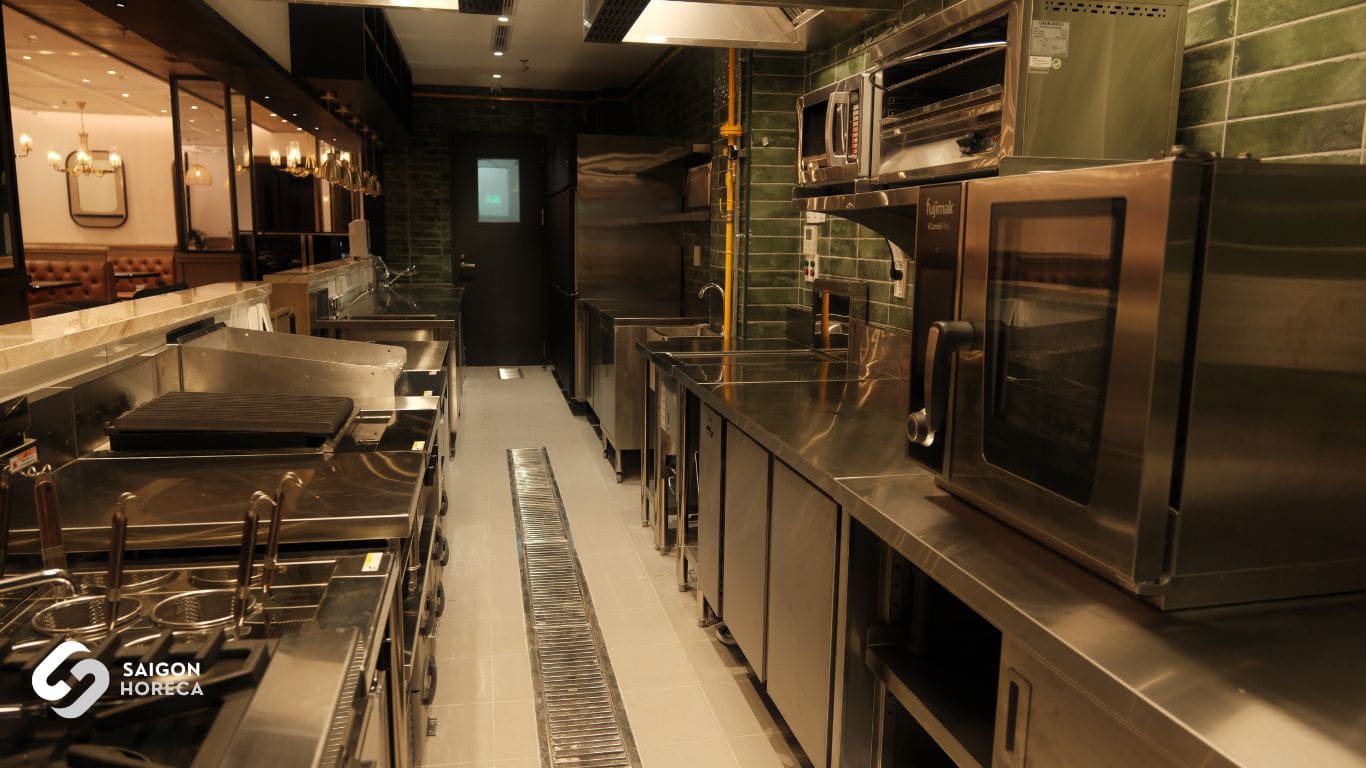
Aesthetic Excellence – When the Kitchen Becomes the Dining Experience
In today’s modern F&B scene, the open kitchen is no longer a novelty – especially in upscale European restaurants. When guests can see the cooking process firsthand, the kitchen becomes more than just a workspace – it becomes part of the culinary experience.
That’s why kitchen aesthetics deserve just as much attention as the dining area or front-of-house. In a high-end restaurant, every detail in the kitchen must be clean, minimal, and aligned with the overall design concept.
Some key aesthetic features commonly found in today’s open kitchen designs include:
- Premium 304 Stainless Steel Finishes: Durable, easy to clean, and visually striking, stainless steel surfaces offer a modern, professional look. Work tables, shelves, built-in chillers – all are typically finished in stainless steel to ensure a polished and hygienic appearance from every angle.
- Tempered or Frosted Glass Partitions: These allow guests to observe the kitchen while providing necessary sound or heat insulation. It strikes a balance between openness and privacy, preserving a luxurious ambiance without compromising functionality.
- Built-In Ventilation Systems: Ceiling – or cabinet-integrated hood systems keep the air fresh and clean without disrupting the design flow. Effective odor control is crucial to maintaining an inviting environment free from cooking smells.
Soft White and Warm Lighting Mix: Blended lighting creates a bright yet welcoming atmosphere. It keeps the space clean and vibrant, avoiding the clinical feel of stark white light while still ensuring optimal visibility for kitchen tasks.
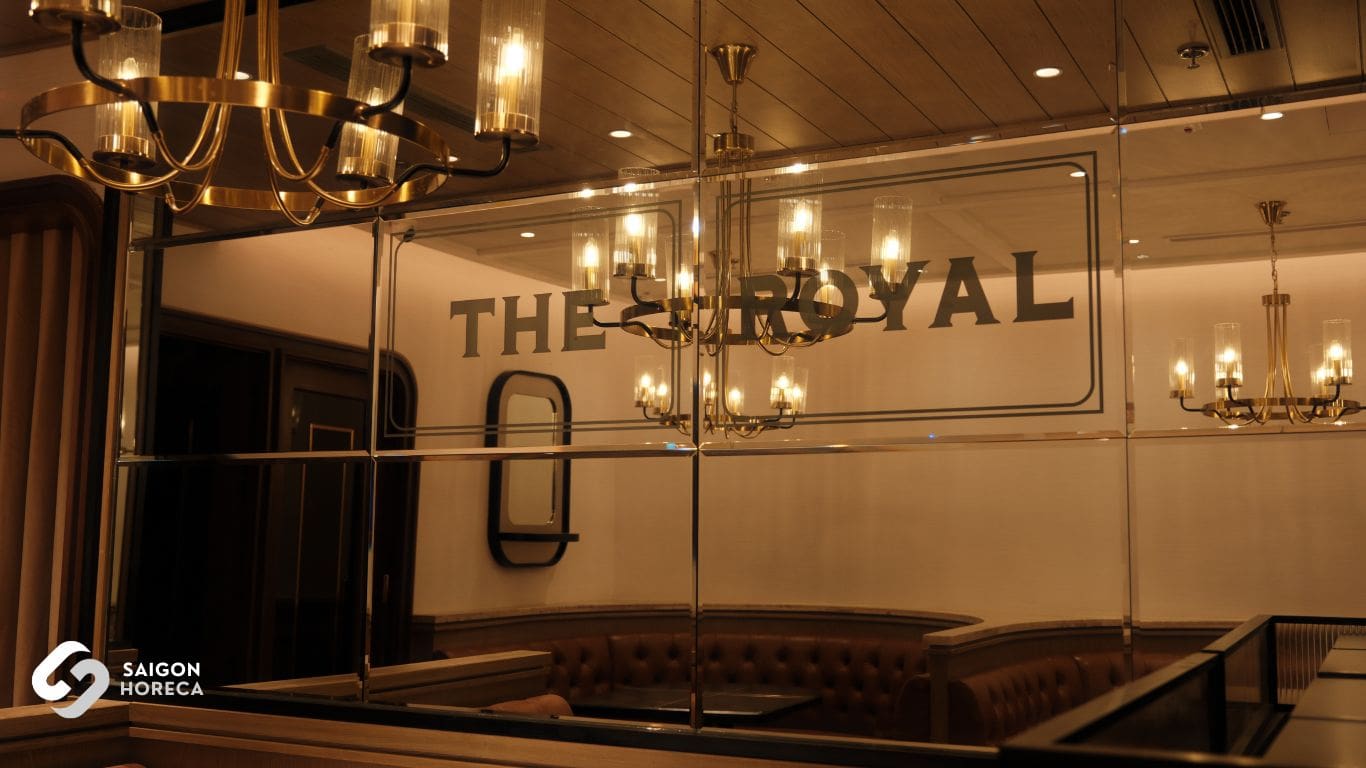
All-in-One Kitchen Solutions from Saigon Horeca
Building a European-standard restaurant kitchen goes far beyond equipment installation. It requires thoughtful design, a deep understanding of real-life kitchen operations, and strict adherence to both aesthetic and safety standards.
At Saigon Horeca, we provide premium industrial kitchen solutions – fully customized and delivered as a complete package.
Our End-to-End Process Includes:
- In-depth consultation & site assessment – aligned with your restaurant’s unique operational concept
- 2D/3D visual kitchen design – helping you visualize the entire space before construction begins
- Turnkey construction – on time, on budget, with certified 304 stainless steel equipment and genuine imported appliances
- Scheduled maintenance & 24/7 technical support – keeping your kitchen running smoothly for the long haul
With a dedicated team of engineers and kitchen architects experienced in complex 5-star projects, we ensure efficiency, durability, and elegance in every build.
Monday - Friday
from 8h00 to 18h00
40 Street No. 6, Melosa Garden, Phu Huu District, HCMC
Contact anytime
In the context of the rapidly growing culinary and food service industry, investing in industrial kitchen equipment for a canteen […]
Read moreLooking to elevate your grilled dishes with a Salamander Grill? With its ability to grill quickly and evenly while giving […]
Read more




